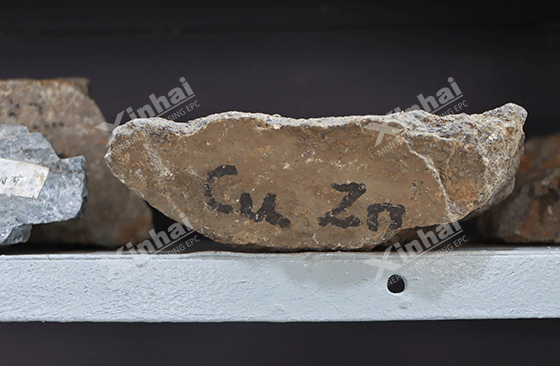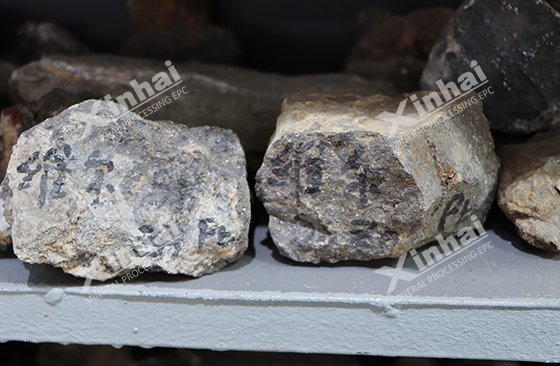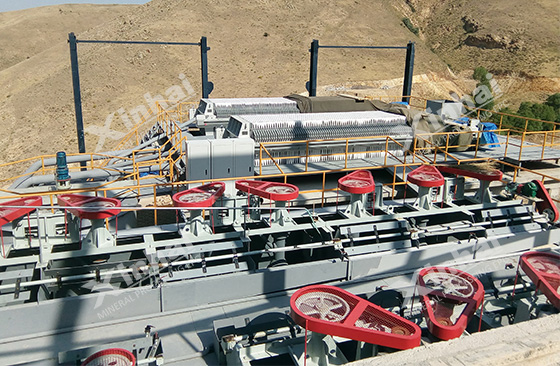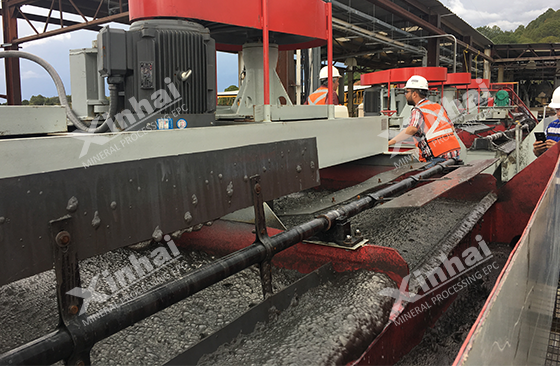Copper and zinc are important non-ferrous metals, and their metals and processing extension industries are irreplaceable industries in the national economy at any time. The importance of copper and zinc to human society is determined by their properties. Copper has excellent corrosion resistance, alkali resistance and organic acid resistance, and can be widely used in many fields, such as electrical, mechanical, and national defense industries. Zinc has good corrosion resistance and is not easily oxidized by air. It is widely used in various mechanical industries, alloys and other fields. Chalcopyrite and sphalerite are the main sources of copper and zinc metals. The mineral processing process should be selected according to the properties of the ore. The following will introduce the properties of chalcopyrite and sphalerite and the commonly used separation technology for copper-zinc ore beneficition.
Use the table of contents below to navigate through the guide:
01Properties of Chalcopyrite
Chalcopyrite can form a copper sulfide film with good hydrophobicity on its surface. Copper sulfide ores are easy to float and are easily captured by sulfide compound collectors such as xanthate. Generally speaking, the richer the copper content of the sulfide, the greater the activity of absorbing the collector and the better the floatability.

The floatability of copper sulfide ore is related to whether its components contain iron. Chalcopyrite and bornite contain iron in their molecular formulas, and their floatability is similar. Cyanide and some oxidants can inhibit their floating, and it is difficult to separate them from pyrite and pyrrhotite. Chalcocite and covellite do not contain iron in their molecular formulas. On the contrary, inhibitors such as cyanide, oxidants and lime have weaker inhibition ability, and they are relatively easy to separate from pyrite.
Chalcopyrite is easily captured by sulfide compound collectors. Sometimes, in order to achieve better flotation effect, sulfide compound ester collectors can be added for flotation. Butylamine black medicine can sometimes be used in combination with other collectors to float chalcopyrite.
There are fewer types of chalcopyrite inhibitors, but cyanide and oxidants can also inhibit its floating in an alkaline environment. A small amount of cyanide has a weak inhibitory effect on chalcopyrite, but when the amount is large, chalcopyrite can be completely inhibited; a large amount of lime also has a certain inhibitory effect on chalcopyrite.
02Properties of sphalerite
Sphalerite has good floatability, but its crystal lattice often contains impurity elements, and the presence of these impurities has a certain effect on the floatability of sphalerite. When the iron content in sphalerite exceeds 6%, it is no longer sphalerite, but is called iron sphalerite. Because iron sphalerite has a higher iron content, its floatability is worse than that of sphalerite.

However, sphalerite and iron sphalerite are easy to activate. Many heavy metal ions, especially Cu2+ ions, have strong activation ability on them, so that zinc minerals in a suppressed state or with poor floatability can be activated, and the floatability is greatly improved.
When sphalerite is activated with copper sulfate, the pH value of the slurry has a great influence. When some sphalerites are activated very seriously, or the minerals are associated with secondary copper ores, or are closely associated with copper ores, or there are copper ions mixed in the lattice, or the slurry contains free copper ions, it is usually difficult to separate them from other minerals, especially chalcopyrite.
03Research status of copper-zinc ore separation process
As the ore dressing process becomes more mature, the copper-zinc sulfide ore separation process has also been continuously developed, making the copper-zinc sulfide ore separation technology more mature, and various new processes and technologies continue to emerge, but the overall principle method is the zinc suppression copper flotation method. The research on the copper-zinc ore separation process is summarized as follows:

1. Priority flotation process. This method is mainly aimed at ores with low copper grade, high zinc grade, relatively simple mineral composition and intercalation relationship, and then selects a reasonable flotation reagent system to carry out copper and zinc priority flotation in turn.
2. Mixed flotation process. This method can be selected when the copper and zinc ore grades in the ore are not much different, the mineral intercalation relationship is complex and the symbiotic relationship is relatively close. The coarsely ground ore is flotated to obtain a mixed concentrate, and the concentrate can be separated after grinding or directly separated.
3. Semi-preferential flotation process. This process mainly processes copper-zinc ore with special properties, close symbiotic relationships, and large differences in mineral floatability. Preferential flotation is used for copper with good floatability, mixed flotation is used for copper and zinc with poor floatability or extremely close intercalation, and mixed concentrates can be separated after grinding or directly separated.

4. Flotation column method. When the flotation column is used, the overall beneficiation cost is reduced, the concentrate enrichment ratio is high, the beneficiation process is simple, and the operation and control are simple. Based on the above advantages, the structure of the flotation column equipment has been gradually improved and applied to mining enterprises, and has been continuously developed and promoted in recent years.
5. Combined process of beneficiation and smelting. This method is mainly used to process complex polymetallic sulfide ores that are difficult to obtain a single qualified concentrate using general beneficiation methods. The specific process is that the raw ore is ground and then enters the fully mixed flotation, and the mixed concentrate is separated by metallurgical technology to separate useful minerals, which can well solve the problem of difficult recovery of some difficult-to-select complex polymetallic sulfide ores.
6. Bio-heap leaching technology. With the development of mineral processing technology, traditional processes have been difficult to meet the needs of some difficult-to-select minerals. Therefore, new processes such as bio-heap leaching technology and bacterial oxidation technology have been developed and continuously promoted, and have achieved good momentum. This technology mainly processes ores with extremely large ore volume and very low grade but worth recycling.
7. Other methods. Asynchronous flotation process, isofloatable process and heated flotation method are rarely used in copper-zinc ore separation. They are used to separate complex and difficult-to-select copper-zinc sulfide ores.

In short, there are many types of copper-zinc ore separation technologies and process flows. The separation process used needs to be selected according to the properties of the copper-zinc ore, but the overall separation principles are zinc suppression copper flotation method and copper suppression zinc flotation method. It can be seen from the above summary that the current copper-zinc ore separation method using zinc suppression copper flotation method is more mature, while the copper suppression zinc flotation method is less used. With the continuous exploitation of resources, the properties of the ore being studied will continue to change, and copper-zinc ores will be more difficult to separate, so more new separation processes will be generated.


 marketing@ytxinhai.com
marketing@ytxinhai.com  0086 13810327080
0086 13810327080 






































































































 CHAT
CHAT MESSAGE
MESSAGE







